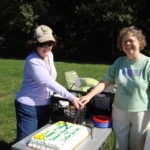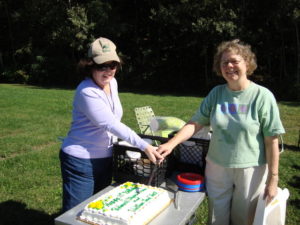
By Sue Bass
This is the 20th anniversary of the Belmont Citizens Forum Newsletter; the organization was founded a little over 20 years ago. How did that happen, and why?
In 1995, McLean Hospital began exploring publicly how to turn part of its 238-acre campus into cash. Psychiatric drugs had revolutionized mental health care; instead of long walks and fresh country air, medicine could prescribe quicker-acting treatment. McLean no longer needed a bucolic campus, and families relying on health insurance could no longer pay for it. The hospital was $40 million or more in debt.
This was not the first time McLean had sold off land. In 1968, the town of Belmont bought 70 acres for $555,800, with federal and state governments picking up three-quarters of the price. The former McLean Farm, where the hospital had milked cows and raised pigs to feed patients, became the Rock Meadow conservation land. By the 1990s, however, federal and state funds for buying conservation land were scarce.
After many public meetings, McLean and town leaders agreed in 1999 on a rezoning package to allow more than a million square feet of development, in return for preserving some open space and for land for affordable housing and a cemetery. The package initially lost in Town Meeting but was passed on a second vote a few months later.
A key selectmen’s meeting was held in secret at McLean. It was ruled improper by state officials, but only after the referendum vote.
Opponents mounted a referendum to overturn the new zoning, but failed. Opposition focused on traffic, especially from the proposed 600,000-square-foot senior complex overlooking Waverley Square and a 150,000-square-foot research and development building nearby—neither of which has yet been built.
After the referendum lost, some people who had been involved on both sides gathered to consider what to do next. The four-year struggle over the McLean had highlighted many concerns about Belmont, including its government. For example, a key selectmen’s meeting was held in secret at McLean. It was ruled improper by state officials, but only after the referendum vote. We considered forming a Better Belmont Coalition to fix the future.
Then we learned that McLean Hospital was asking a court to declare that its new zoning was legal—that it was not “illegal contract zoning,” a new concept to us. According to the Handbook of Massachusetts Land Use and Planning, illegal contract zoning is when “a local government . . . extracts a performance or promise from the developer in exchange for its agreement to rezone the property.”
Our focus changed. Instead of merely preventing the next mistake, we’d need to continue the fight over McLean development. If we had to raise hundreds of thousands of dollars for a legal battle, contributions would have to be tax deductible. We’d have to be a nonprofit, not a political group. We developed a mission statement, presented in full on page two of the January 2000 issue of the BCF Newsletter, (bit.ly/BCFJan2000). We’d focus on preserving Belmont’s natural and historical resources, limiting traffic growth, and enhancing pedestrian safety. Those four principles continue to guide us.

Waltham Land Trust vice president Diana Young (left) and Belmont Citizens Forum board member Sue Bass cut a joint 10th anniversary cake, September 2009.
Sue Bass was the first president of the Belmont Citizens Forum and remained on the board for about a decade. She has continued to participate on the Newsletter Committee.



Sorry, the comment form is closed at this time.